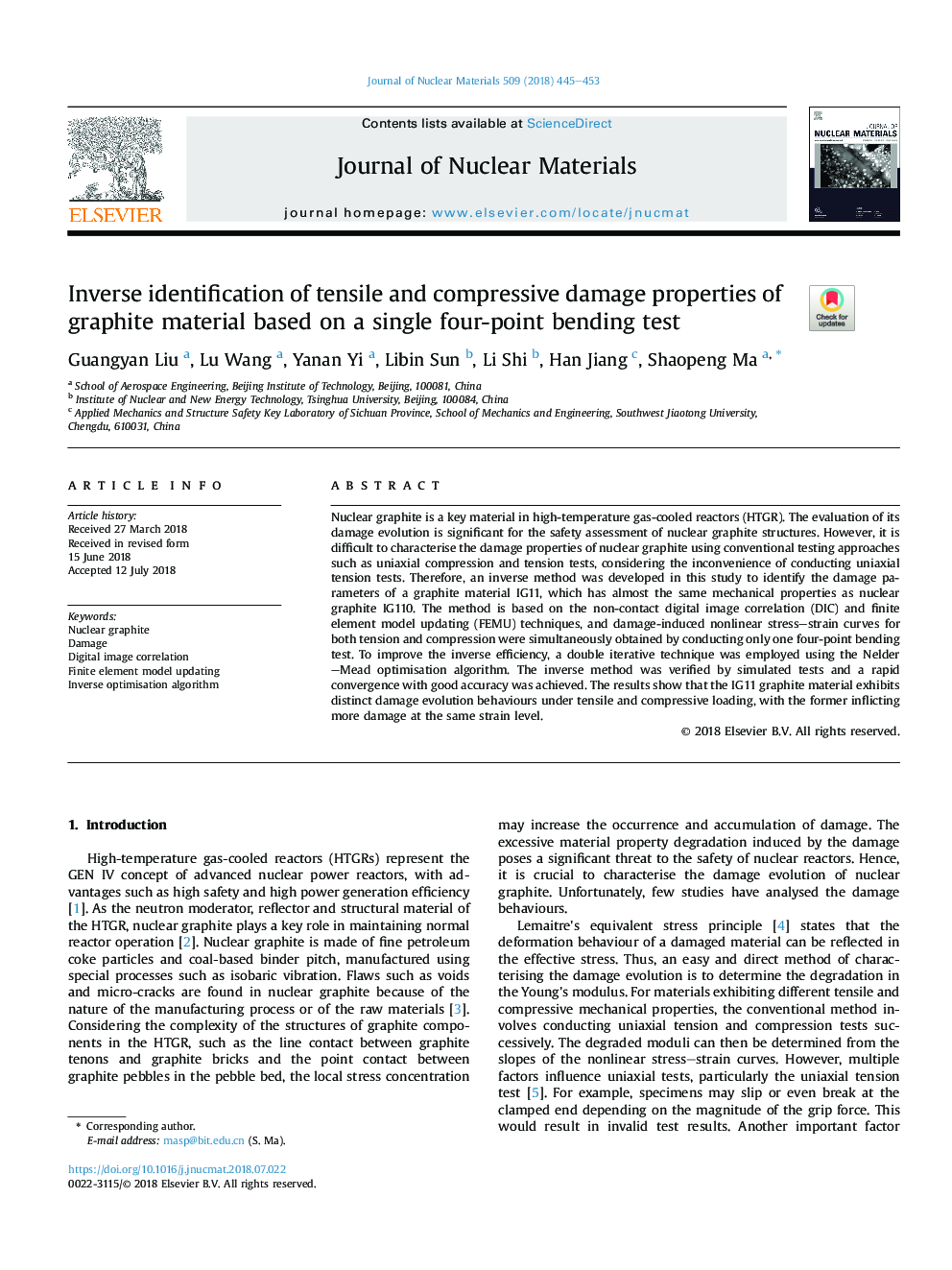| Article ID | Journal | Published Year | Pages | File Type |
|---|---|---|---|---|
| 7962943 | Journal of Nuclear Materials | 2018 | 9 Pages |
Abstract
Nuclear graphite is a key material in high-temperature gas-cooled reactors (HTGR). The evaluation of its damage evolution is significant for the safety assessment of nuclear graphite structures. However, it is difficult to characterise the damage properties of nuclear graphite using conventional testing approaches such as uniaxial compression and tension tests, considering the inconvenience of conducting uniaxial tension tests. Therefore, an inverse method was developed in this study to identify the damage parameters of a graphite material IG11, which has almost the same mechanical properties as nuclear graphite IG110. The method is based on the non-contact digital image correlation (DIC) and finite element model updating (FEMU) techniques, and damage-induced nonlinear stress-strain curves for both tension and compression were simultaneously obtained by conducting only one four-point bending test. To improve the inverse efficiency, a double iterative technique was employed using the Nelder-Mead optimisation algorithm. The inverse method was verified by simulated tests and a rapid convergence with good accuracy was achieved. The results show that the IG11 graphite material exhibits distinct damage evolution behaviours under tensile and compressive loading, with the former inflicting more damage at the same strain level.
Related Topics
Physical Sciences and Engineering
Energy
Nuclear Energy and Engineering
Authors
Guangyan Liu, Lu Wang, Yanan Yi, Libin Sun, Li Shi, Han Jiang, Shaopeng Ma,
